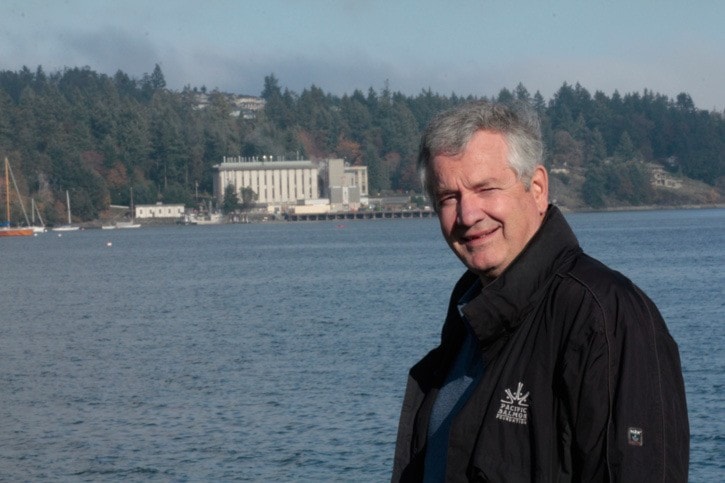A joint research project aimed at studying salmon mortality numbers in the Salish Sea will get a large cash injection in the form of a $5 million grant.
The Pacific Salmon Commission will provide funding to Vancouver-based Pacific Salmon Foundation and Seattle-based Long Live the Kings for their Salish Sea Marine Survival Project.
The money will be divvied up evenly between the two over the next five years, with $1.8 million granted for early 2014 and $800,000 annually for the subsequent four years.
Brian Riddell, president and CEO of the Pacific Salmon Foundation, said from his organization’s perspective, the project targets three things.
“No. 1 is really trying to understand what’s annually determining the production of salmon in the Strait of Georgia,” Riddell said.
“If you’ve been here for awhile, you know that the chinook and coho production is way down and sockeye and pink are all over the place, quite variable in that and there’s something going on, very local, that we really don’t understand yet.”
Other goals of the project are recovery of local chinook and coho populations, and restoration of fishing for economic and recreational purposes.
Salmon numbers have been on the decline despite a resurgence in coho and chinook in 2013. Research still needs to be done to understand why.
“What we do know is that from all the various pieces put together, it very much looks like the highest mortality rates occur in the first four to six weeks when they go to sea and that’s the critical period we need to understand,” Riddell said.
In terms of the Pacific Salmon Foundation, the money will go toward 14 projects.
“It’s split between what we call bottom up control, and all we mean by that is the environmental annual control of the production of zooplankton and phytoplankton – think of it in terms of the fish food base – and that’s also directly related to the survival rate of the young salmon,” Riddell said.
Top down control, or biological controls, such as predators (seals), disease or interaction with hatchery fish will also be examined and while Riddell said there has been much research done in the past, it has been fragmented and in order to understand what the real control is, everything must be examined at the same time.
“The real difference in this program is that we’ve been waiting for everything to be let go at the same time; we’re going to do the whole program at once, so that we can measure everything simultaneously and really understand the interactions,” Riddell said.
The cost of the entire project (between the two organizations over five years) is estimated at $20 million and Riddell said there other funding sources.
“We have a plan. Part of it will be money that will come from the recreational fishery, through our salmon conservation staff, some of it will be money from other foundations,” he said. “We are raising funds from private and corporate donors, since we’re a charity, and we will go to other foundations to look for money and we will also be going to government looking for a small portion of the money.”
